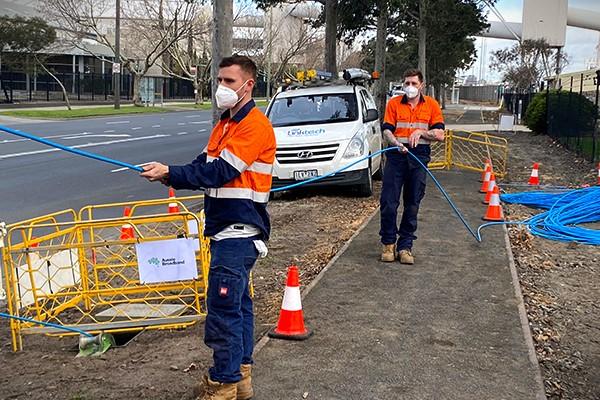
Aussie Broadband announced on Wednesday it would raise AU$114 million via an institutional placement.
Making good on its statement in its recent results that the company expected to make one acquisition in the first half of FY22, the company said the money would be used to “support growth by M&A, new business product and technology development, and/or further fibre and network build.”
“We are very encouraged by the strong level of support from new and existing institutional, sophisticated, and professional investors. We greatly appreciate the backing of existing shareholders who participated in the placement and welcome new shareholders that have joined the register as part of the equity raise,” Aussie Broadband managing director Phillip Britt said.
“There are promising opportunities to execute transformational acquisitions in the business segment that will complement and improve Aussie Broadband’s position in the market.”
The announcement follows the company appointing a head of mergers and acquisitions in April.
In its full-year results, the telco reported revenue increased 84% to AU$350 million, and earnings before interest, tax, depreciation, and amortisation prior to AU$1.5 million in IPO expenses jumped five-fold to AU$19 million. In the fourth quarter alone, the company reported revenue of AU$100 million.
See also: Best internet provider in Australia 2021: Top ISPs
Aussie Broadband said when handing down its results, that due to ongoing lockdowns around the country and the impact on NBN CVC expense, it would not be providing guidance.
In the recent ACCC NBN speed report, Aussie Broadband saw its error rate blow out, doubling its 0.18 daily outage rate to 0.36. This increase occurred as every other telco tested saw a dropping error rate.
Responding to the numbers, Britt said the company “keeps an eagle eye on network usage” and upgrades the network if it sees peaks beyond its normal range.
“The ACCC’s report here covers data over a 24-hour period. That means it includes things like scheduled outages, CVC upgrades, and fibre upgrades. Typically, planned outages take place between midnight and 6am. This is to minimise the impact to end users because most people don’t use the internet at that time,” Britt told ZDNet.
“One of the reasons why we do this is simply to move customers from one CVC and put them onto another one, so the current CVC doesn’t get overloaded.
“We also think it’s important to look at outages that last for longer than 60 seconds because these are more likely to have an impact on end user experience. From the ACCC’s report, we’re relatively low compared to other telcos in this area.”




















